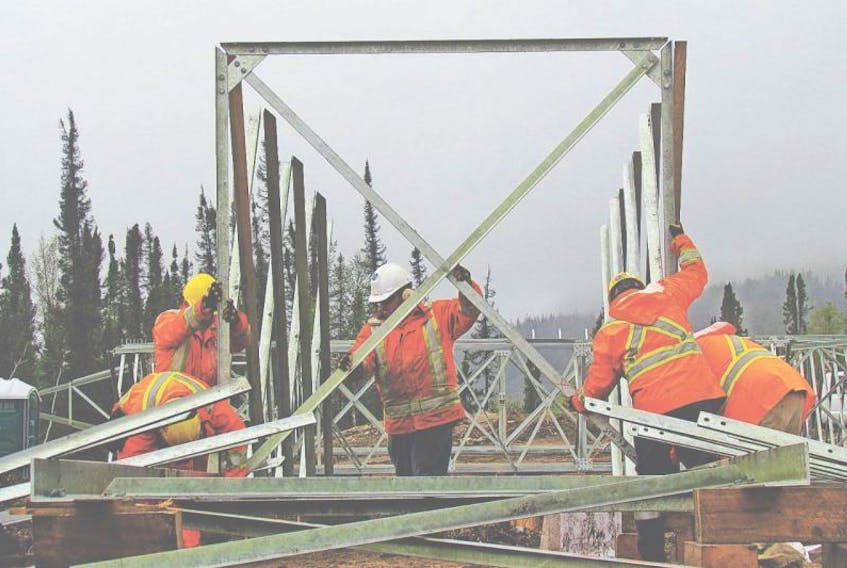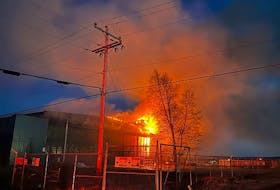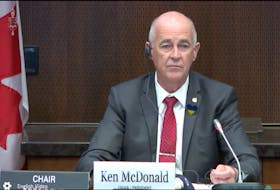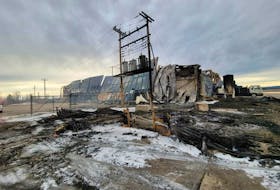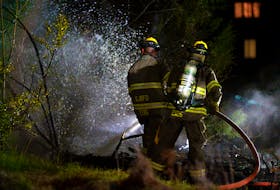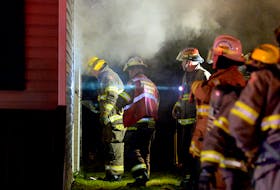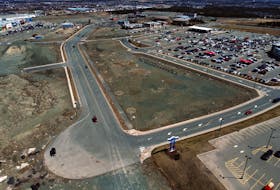As an ingredient in the herbicide Tordon 101, 2,4-D (or 2,4-dichlorophenoxyacetic acid) is slated to be used in keeping vegetation back from the roughly 1,100 kilometres of new power line being built in Newfoundland and Labrador.
To start, the right of way - a treeless corridor - for the power line will be cut. Fast forward seven years, as the natural growth begins to crawl back towards the transmission towers. At that point, there will be cutting and chemical spraying, according to filings on the project by proponent Nalcor Energy.
The chosen chemicals, at this point, are Tordon 101 mixed with Sylgard 309.
Tordon 101, already banned for cosmetic uses provincially, has prompted anti-pesticide demonstrations and petitions over the past two years, including a "day of action" held at Bannerman Park in St. John's in early June.
Regulated under the federal Pest Control Products Act, 2,4-D products including Tordon 101 have been approved for use by Health Canada. And Health Canada conducts regular, scheduled reviews of its approvals in the name of public safety.
But, in light of a ban against 2,4-D products in Norway in 2000 and following a legal push by environmental groups including Équiterre, the David Suzuki Foundation and Ecojustice, Health Canada has started a required "special review" of the safety of 2,4-D products. It began in December 2013.
"The review has been initiated is our understanding, but there's been no documentation or evaluation released," said Elaine MacDonald, a scientist with Ecojustice.
Her group issued a report Wednesday, entitled "Waterproof: Standards" challenging the federal government to beef up the Guidelines for Canadian Drinking Water Quality. It highlights 2,4-D as being "frequently detected in surface water across Canada," pointing to the findings of a more detailed Environment Canada report from 2011. The Environment Canada study did not include testing of water in Newfoundland and Labrador.
Overall, there has been pushback against chemical spraying - 2,4-D or not - in the province.
"I'm anxious to see what Health Canada's (special review) findings will be," said Liberal MHA Tom Osborne, who said the sheer scale of the task of keeping vegetation from encroaching on the province's new, main power line may ultimately require the use of herbicides like Tordon 101.
"We can't put the safety of the people of the province or of the environment at risk because of costs," he said, but also noted Health Canada may ultimately determine the herbicides are not a health concern. "I'm hoping government is actively looking for alternatives now."
"There's things they can be doing other than using chemicals," said NDP MHA George Murphy, who said he was not certain it would come at a greater cost to the taxpayer, given his belief the use of chemical herbicides including Tordon 101 has the potential to cause health problems - despite Health Canada's findings. He suggested more mechanical brush clearing be used in the place of chemical spraying.
Nalcor Energy subsidiary Newfoundland and Labrador Hydro does not currently use Tordon 101 around power lines, instead using Escort and Banvel VM, following provincial regulations and federal rules.
"As is standard practice, there will be a public notification and an evaluation of any environmental sensitivities wherever herbicides are to be used. Vegetation control personnel will be appropriately trained and qualified."
A spokeswoman for Health Canada has said there is no estimate on when the result of the 2,4-D review might be available.

